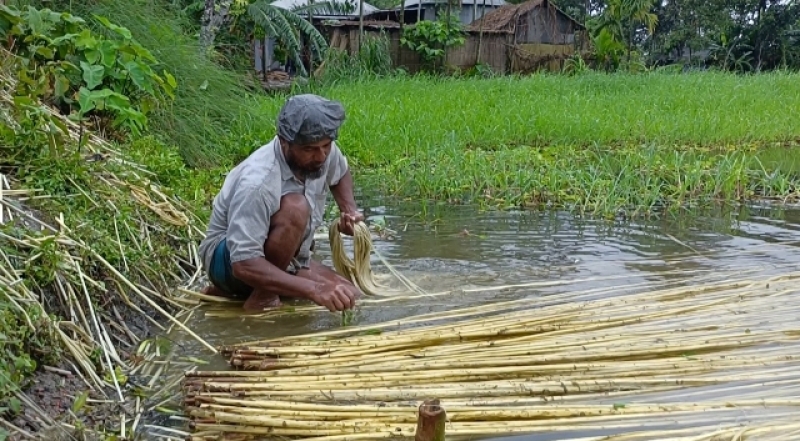- Janaza of six Bangladeshi peacekeepers held at Dhaka Cantonment |
- Bangladesh stock market loses Tk 10,500cr in a week |
- Dhaka’s air turns ‘very unhealthy’ on Sunday morning |
- Project to transform N’ganj into a climate-resilient green city |
- Sustainable, rights-based solutions to Rohingya crisis urged |
Natural disasters cause Tk 105cr loss in Kurigram’s agri sector this year

Kurigram incurs loss of Tk 105cr due to droughts, excessive rainfall & flooding
Kurigram, Aug 16 - Severe droughts, excessive rainfall and flooding have caused extensive loss to agriculture in Kurigram as thousands of hectares of land dedicated to jute, aman seedbeds, vegetables and aush paddy have been damaged, said authorities.
Of them, jute cultivation in the low-lying areas has suffered the most. This year, the agricultural sector in the district has incurred losses amounting to Tk 105 crore with jute alone accounting for more than half of that sum.
Kurigram, which is intersected by five inter-border rivers – the Brahmaputra, Dharla, Teesta, Dudhkumar and Jinjiram – and sixteen other rivers, is prone to frequent natural disasters such as floods.
This year, this northern district experienced a drought during April and May followed by excessive rainfall throughout June, with 1,100 millimeters recorded, according to the Rajarhat Agricultural Weather Office.
Flooding began in early July and even after two weeks of flooding water has not completely receded from the low-lying areas.
According to the Department of Agricultural Extension (DAE) in the district, the target for jute cultivation this year was set at 17,950 hectares but due to the drought only 17,256 hectares were cultivated.
Of them, 2,884 hectares of jute have completely been destroyed by the heavy rains and flooding.
Visiting Jatrapur and Paikgachhi unions under the Sadar upazila, the UNB correspondent found that many jute plants have withered due to being submerged in water.
Farmers are now drying the dead plants to use as jute sticks and some are attempting to harvest the jute, though the quality and yield are poor. Consequently, jute farmers are struggling not just with profitability but even with recouping their cultivation costs.
Rahimuddin, a farmer from Ghono Shyampur area of Jatrapur Union, said, “I had cultivated jute on two bighas of land, and it was almost time for harvest. The flood submerged everything, and now all the plants are dead. I have no option but to cut and dry them.”
DAE Official Md. Mamunur Rahman informed that 21,346 jute farmers have been affected by floods as some 10,240 metric tonnes of jute were damaged causing a loss of Tk 56 crore.
He also said that efforts are underway to encourage farmers to switch to Aman paddy cultivation as soon as the floodwaters recede.
Moreover, the department is advising farmers in the flood-affected areas to prepare for early Rabi crops if the waters take time to recede.

